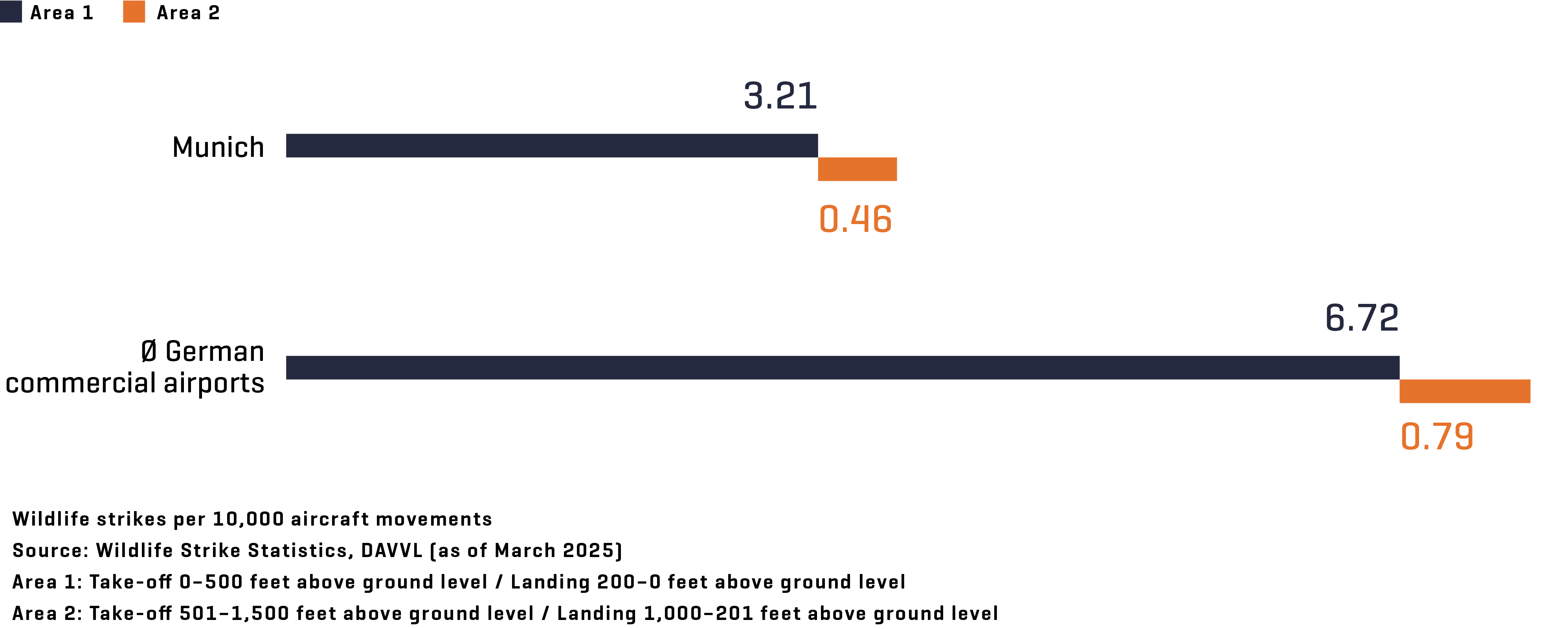Safety: high priority at the airport
Safe flight operations: minimizing the risk of accidents
The European Union has set common standards for the planning, operation and maintenance of airports, which we are also obliged to implement. The operating license for Munich Airport is directly linked to the certification granted by the European Aviation Safety Agency (EASA) in December 2017. Under this certification, the airport must demonstrate constant compliance with relevant requirements to the supervisory authority responsible for us, the South Bavarian Aviation Office at the District Government of Upper Bavaria. We have a safety management system as one way to achieve these aims. Through the system, the airport continuously monitors ongoing flight and handling operations with an eye to risks and trends in order to identify targeted actions early on. To meet the requirements, we implement construction modifications to infrastructure relevant to the operation of the airport and adjust operational and organizational processes in accordance with EASA guidelines, applying safety risk assessments and compliance reviews. This approach was again helpful in 2024 in minimizing accident risks and continuously and proactively improving the safety of flight operations.
Low bird strike rate: special biotope management
Collisions between aircraft and heavyweight birds or flocks of birds can endanger the safety of flight operations. We use a special biotope management to prevent possible collisions:
The nutrient-poor meadow areas are mowed only twice a year, as long grass makes it difficult for predatory birds to find prey. Swarming birds, in turn, avoid these areas because of the lack of visual contact with each other.
The terrain on and around the airport is unattractively designed for bird species that pose a critical risk.
The drainage channels near the runways are spanned by steel ropes in order to make access difficult, particularly for waterfowl.
The wildlife management team at the traffic control department monitors the bird population at the airport grounds and in relevant biotopes within the vicinity in order to ward off potential dangers from bird flight movements at an early stage. If necessary, it takes action to scare away birds.
We maintain close contact on the subject of bird strike prevention with relevant partners and institutions, particularly with airlines, German Air Traffic Control, regional and national authorities, and the German Bird Strike Committee (Deutscher Ausschuss zur Verhütung von Vogelschlägen im Luftverkehr e.V. – DAVVL). DAVVL statistics have shown a comparatively low wildlife strike rate for Munich Airport for many years. In 2024, it was around 109 percent higher on average in Germany than at the Munich airport site.
WILDLIFE STRIKES

